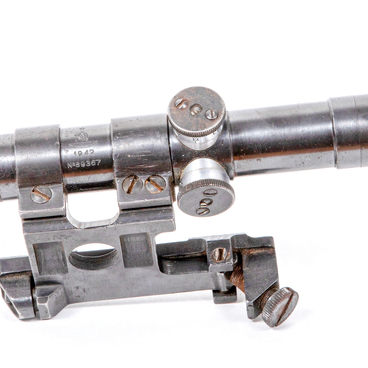By the end of the 19th century, wire with fixed sharp spikes, or ‘hedgehogs’, was widely used in farming. Farmers used wire fences to enclose their pastures so that the cattle could not leave them. The poles to which the wire was attached were set 3 to 50 meters apart, depending on the terrain: long sections were able to withstand the pressure and temperature changes.
Soon, inexpensive and effective barbed wire began to be used against people as well. In World War I, there were many kilometers of antipersonnel barriers made of several rows of wire. There were 2-3 times more spikes fixed on them than on the wire used for agricultural purposes.
Both World Wars showed that it was impossible to organize an attack along the entire front at once. It was only possible to break through the defenses in very few places. In such gaps, the defenders put up artificial obstacles. Their design included wire barriers, both straight and twisted in spirals. They were set up so that the enemy could not see the wire from a long distance. It took a team of 6 to 8 men about an hour to install 100 meters of the barrier.
The spikes made it difficult for enemy infantry to move, scattering their fighting formations, forcing soldiers to stop in order to break through the wire or throw bridges woven from twigs over it. At these moments the enemy suffered serious losses under machine-gun and artillery fire. The distance between the rows of wire was one and a half steps, so after getting out of one row a soldier would get into the next one. During an attack, soldiers dismantled these barriers with special scissors: under fire, they crawled up to the wire barriers and cut them down.
According to the rules, wire barriers were set at such a distance from the trenches so that the enemy grenades could not reach them. Only the artillery could destroy the barbed-wire fences en masse without losses. This is why soldiers would build several rows of wire so that the artillery could only destroy one row per an attack. Hundreds of shells tore out the wooden poles and plowed through the ground, making small gaps in the barbed wall.
Soon, inexpensive and effective barbed wire began to be used against people as well. In World War I, there were many kilometers of antipersonnel barriers made of several rows of wire. There were 2-3 times more spikes fixed on them than on the wire used for agricultural purposes.
Both World Wars showed that it was impossible to organize an attack along the entire front at once. It was only possible to break through the defenses in very few places. In such gaps, the defenders put up artificial obstacles. Their design included wire barriers, both straight and twisted in spirals. They were set up so that the enemy could not see the wire from a long distance. It took a team of 6 to 8 men about an hour to install 100 meters of the barrier.
The spikes made it difficult for enemy infantry to move, scattering their fighting formations, forcing soldiers to stop in order to break through the wire or throw bridges woven from twigs over it. At these moments the enemy suffered serious losses under machine-gun and artillery fire. The distance between the rows of wire was one and a half steps, so after getting out of one row a soldier would get into the next one. During an attack, soldiers dismantled these barriers with special scissors: under fire, they crawled up to the wire barriers and cut them down.
According to the rules, wire barriers were set at such a distance from the trenches so that the enemy grenades could not reach them. Only the artillery could destroy the barbed-wire fences en masse without losses. This is why soldiers would build several rows of wire so that the artillery could only destroy one row per an attack. Hundreds of shells tore out the wooden poles and plowed through the ground, making small gaps in the barbed wall.



